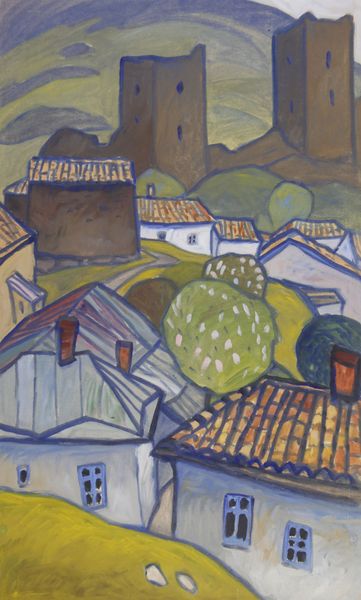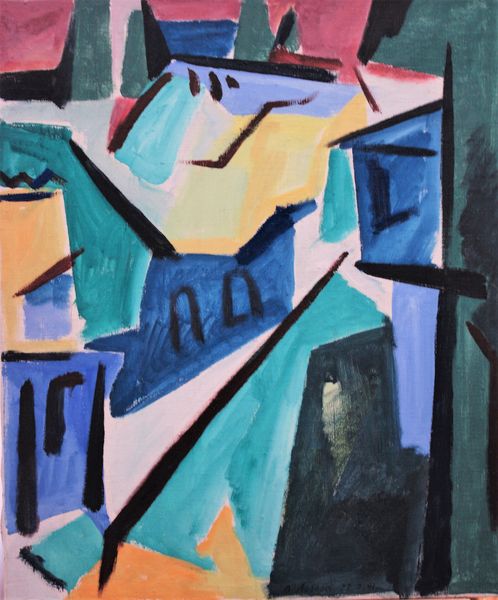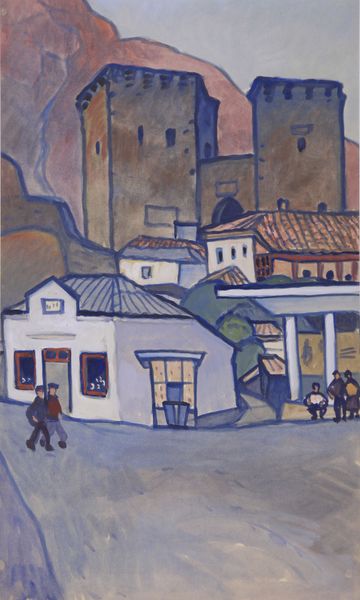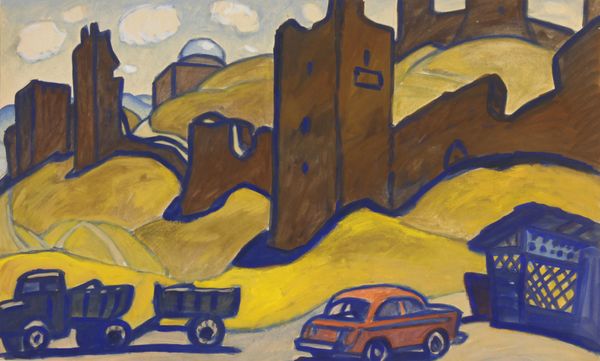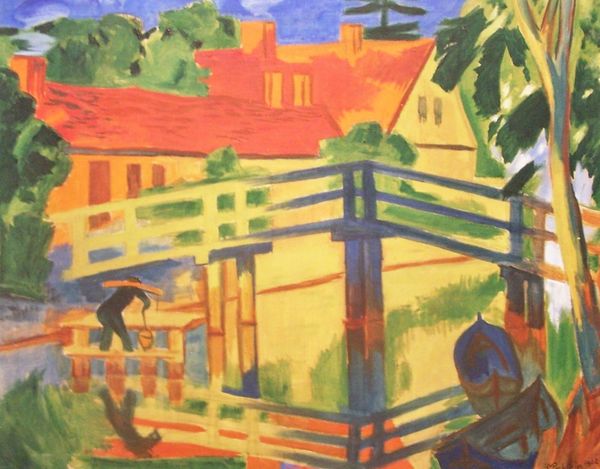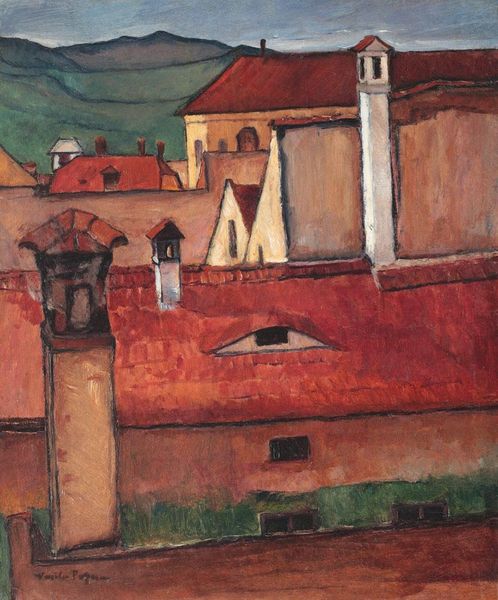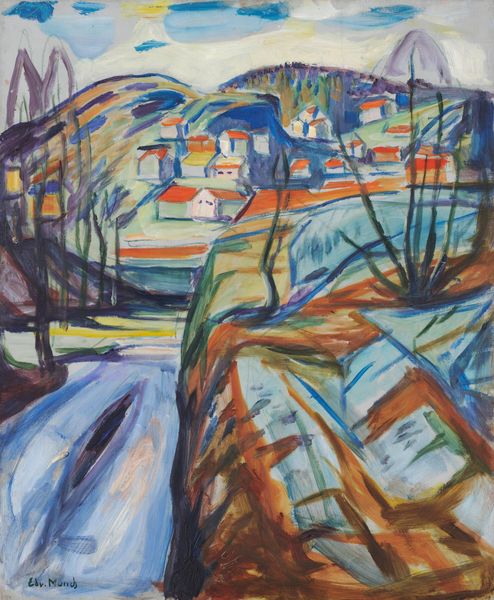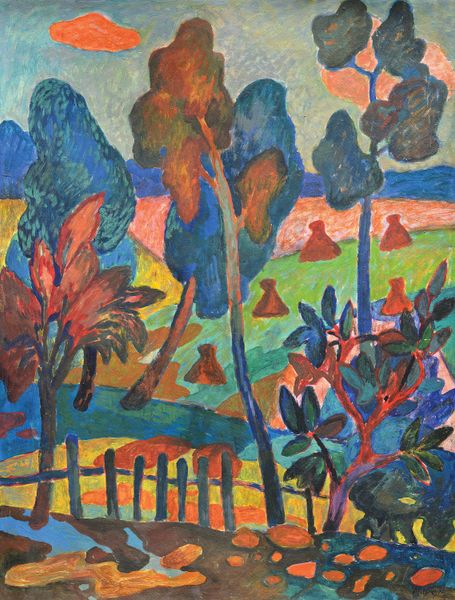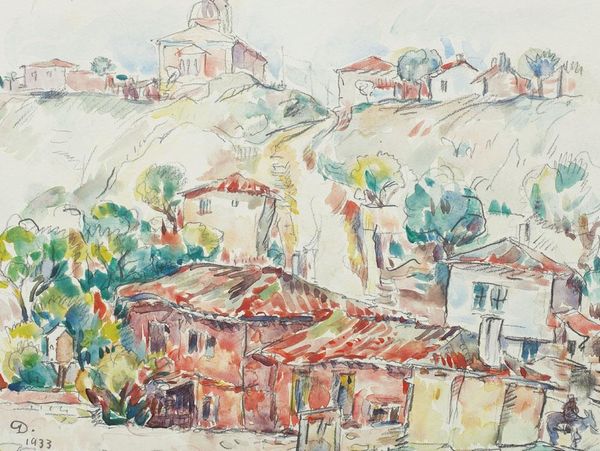
Dimensions: 50 x 82 cm
Copyright: Yuriy Khymych,Fair Use
Curator: This is "Near the Genoese Fortress," painted in 1983 by Yuriy Khymych. It’s an acrylic piece showing a town dominated by a fortress in the background. What are your initial impressions? Editor: The color palette hits me immediately—those contrasting blues and oranges create an almost jarring sense of vibrancy. And the simplified, geometric forms... it's as if Khymych is presenting us with the essence of this place, stripping away detail. Curator: I see it as a fascinating snapshot of a particular moment in Ukrainian history. Consider the post-impressionistic style juxtaposed with the representation of everyday life under Soviet rule—a personal car, for example, amidst an older, fortified cityscape. This resonates with the tensions of modernity versus tradition and the constraints placed upon individual expression. Editor: Indeed, there's a tension in the formal aspects as well. Look at the stark linearity of the building outlines versus the more organic forms of the trees and the rolling landscape. Khymych creates visual rhymes, connecting architectural structure to natural form. Curator: I am thinking about what this fortress represented across multiple occupations and cultural shifts, becoming not only a structure but also a silent witness to centuries of evolving power dynamics and layered identities in Ukrainian history. How is that monumental backdrop influencing the perception of the red car? Editor: That’s very interesting… the modern car certainly reads differently set against such history. Looking again at the composition, notice how Khymych positions the fortress so high, it's almost surreal in scale. This intensifies the flattened perspective. The architectural space collapses, pushing everything towards the picture plane. Curator: The post-impressionistic lens transforms the scene, filtering it through an awareness of broader political and social currents that were relevant during that era. Think about the role of art as resistance under Soviet restrictions and Khymych's subtle ways of conveying nuanced dissent through representational choices. Editor: The geometric shapes, and even the shadows rendered in pure, almost fauvist color, can be viewed as signifiers themselves. Through structural choices he created something that evokes rather than replicates. The work becomes more than a mere depiction of a place. Curator: I'm left considering the intersection between personal expression, historical narrative, and the socio-political landscape. It underscores the significance of how individual stories coexist within grander historical trajectories. Editor: And I am struck by how those seemingly simple compositional choices create such resonating layers of interpretation, confirming how art, when observed closely, can communicate with clarity.
Comments
No comments
Be the first to comment and join the conversation on the ultimate creative platform.

